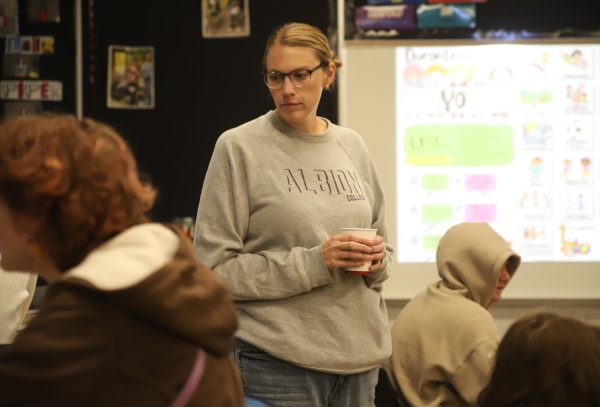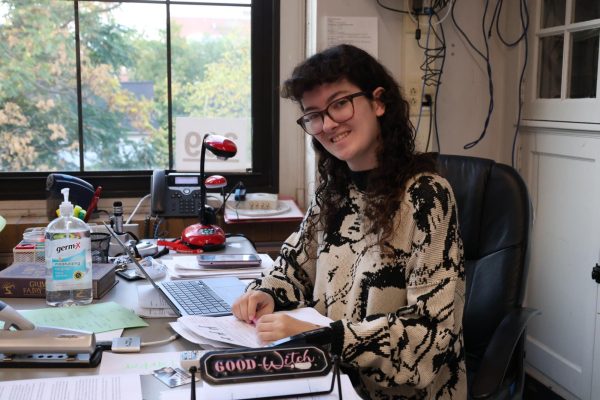Don’t get sick on Monday
At Community High School, the nurse is only here one day per week: Wednesday. Which means that you may not want to get sick on Monday. Or Tuesday, Thursday or Friday. The school’s nurse, Keely Hoffman, cycles between five different buildings in the district. This is obviously concerning for many CHS students, especially students with allergies.
“I don’t think that it’s well planned out,” CHS senior Eve Shikanov said. “[The nurse] shouldn’t have to be running between five buildings.”
School nurses do a variety of things, from taking someone’s temperature to administering an EpiPen; there could be a disaster if an allergic reaction occurs and the nurse isn’t there.
However, there is another nurse — sort of — Katy Sanderson, the Community Resource secretary, acts as the stand-in nurse whenever Hoffman isn’t there. Sanderson does everything that Hoffman would normally do. In cases where she does not know what to do or has any doubts, she calls Hoffman. Sanderson is trained in basic first aid, which is about as much training as she needs on a regular day. One thing that Hoffman and Sanderson have in common is that they are both unable to give medication to students.
“Actually, even the nurses here aren’t allowed to give much medication, but they are more educated,” Sanderson said.
That is the biggest difference between Sanderson and Hoffman: the latter is medically trained.
“[Nurses] do a lot of training with others so that they are prepared to deal with situations,” Hoffman said. “But one of the key things is that [nurses have] been trained to look for things that others may not know.”
For example, Hoffman is trained to deal with complications stemming from diabetes and can take someone’s blood pressure.
According to Hoffman, one of the most important parts of her job is training staff in order to make them aware of potential problems. That’s why at the beginning of every year, Hoffman attends staff meetings to train lunchroom staff, office professionals, teacher assistants, and teachers. This ensures that Sanderson — along with all of the other “stand-in nurses” across the district — are well trained and qualified to deal with most incidents a school nurse would have to deal with in a normal school day.
However, Hoffman does acknowledge that the ideal situation would be to have nurses in every building.
“If we had one nurse per building, I think that there’s so much more we can do than just giving band aids [and] taking care of immediate needs.” Hoffman said. “We can do more with wellness, health education, support and we can dig deeper into some of the issues that kids have nowadays. A lot of times it’s just putting the band aid on and sending them off, and we don’t always have the quality time to give to the students.”
There’s an easy answer to why there aren’t more nurses in the district: the budget. There simply is not enough money to pay for more nurses.
Which begs the question of why Ann Arbor Public Schools (AAPS) can pay for new furniture across their schools, but not more nurses. According to the AAPS website, the district spent $3.2 million from a 2015 bond on the new furniture and plans to spend up to $10 million on “classroom environment.”
“That’s upsetting,” Shikanov said. “Instead of spending $10 million on all the new chairs and tables, we could have spent more time and money getting more nurses for the district or getting us [air conditioning] units or maybe increasing the amount that we pay our janitors and some of our teachers.”
Unfortunately, unless another bond is passed, funding for teachers, nurses and air conditioning probably won’t be available.
“I think in education, money is always an issue and the priorities are in our other needs,” Hoffman said. “We’re fortunate to have the nursing staff that we do. We have a great group of core nurses who work well together, but it does seem that we could always benefit from having more.”
One thing that could be done about this, according to Hoffman, is to make your voice heard. It could be students, parent groups etc., but anyone who believes that this is an issue that should be raised should do their part to raise it. If there is money to be found in the budget, making sure AAPS knows where to put it could go a long way in improving the district.









